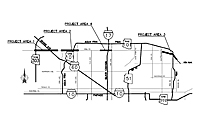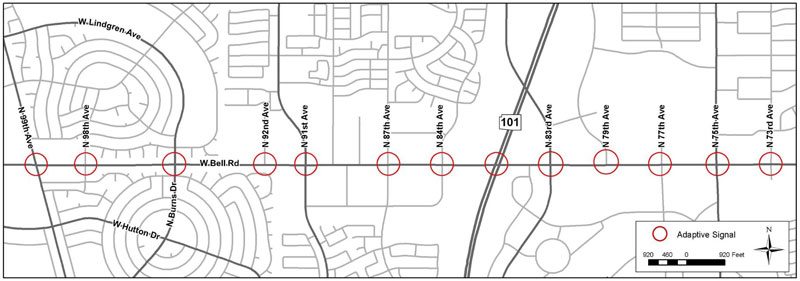Partnership including ADOT uses technology to improve Bell Road traffic flow
Partnership including ADOT uses technology to improve Bell Road traffic flow

Bell Adaptive Project
By Caroline Carpenter / ADOT Communications
New technology aims to reduce waits and improve travel time on Bell Road, one of the busiest streets in Maricopa County. New Adaptive Signal Control Technology along Bell Road between 99th Avenue and 73rd Avenue, a stretch that includes an interchange with the Loop 101 Agua Fria Freeway, is designed to reduce congestion.
Because of the connection with the state highway system, ADOT joined the Maricopa County Department of Transportation and the cities of Glendale and Peoria to make this upgrade a reality through AZTech, a regional traffic-management partnership in the Phoenix metro area.
“This cooperative, multi-agency project is the future of traffic management,” said Brent Cain, director of ADOT’s Transportation Systems Management & Operations Division. “For example, when changing freeway conditions affect traffic patterns at nearby Bell Road intersections, the adaptive signal technology responds with traffic light adjustments to limit delays.”
Now that you know how this project got underway, let’s get to the nitty gritty and look at how this technology works and its benefits.
Adaptive Signal Control Technology uses real-time data to automatically adjusts the timing of lights at intersections as traffic changes. Before the change, traffic engineers pre-programmed the signals. Now the signals respond immediately to conditions.
Besides getting you to your destination as efficiently as possible, there are other benefits to technology. Less time at stoplights reduces vehicle emissions and fuel consumption.
It’s important to note this is a pilot project and is still in its testing phase at 13 intersections surrounding Bell Road and the Loop 101 freeway interchange. It eventually will be installed at 50 intersections.

